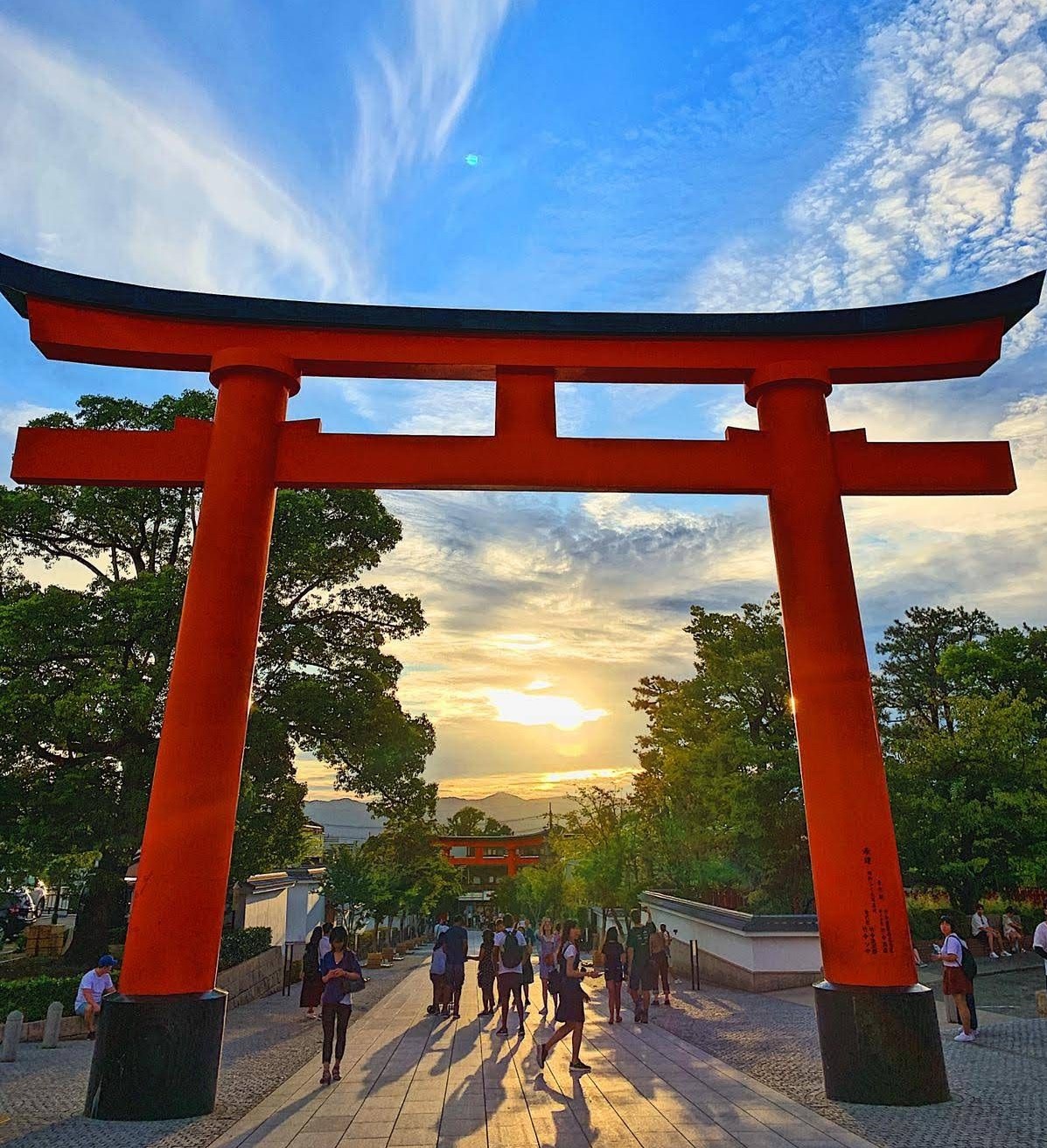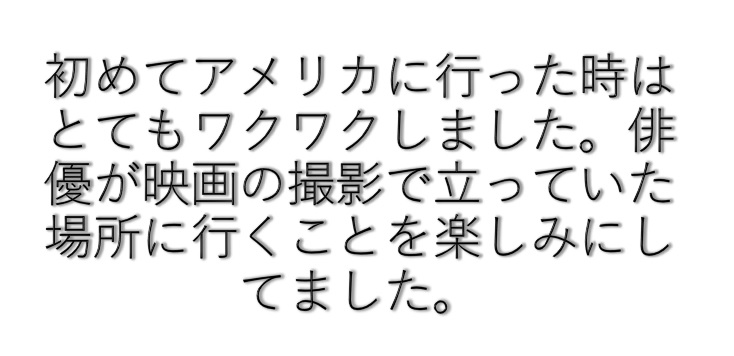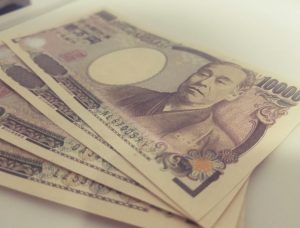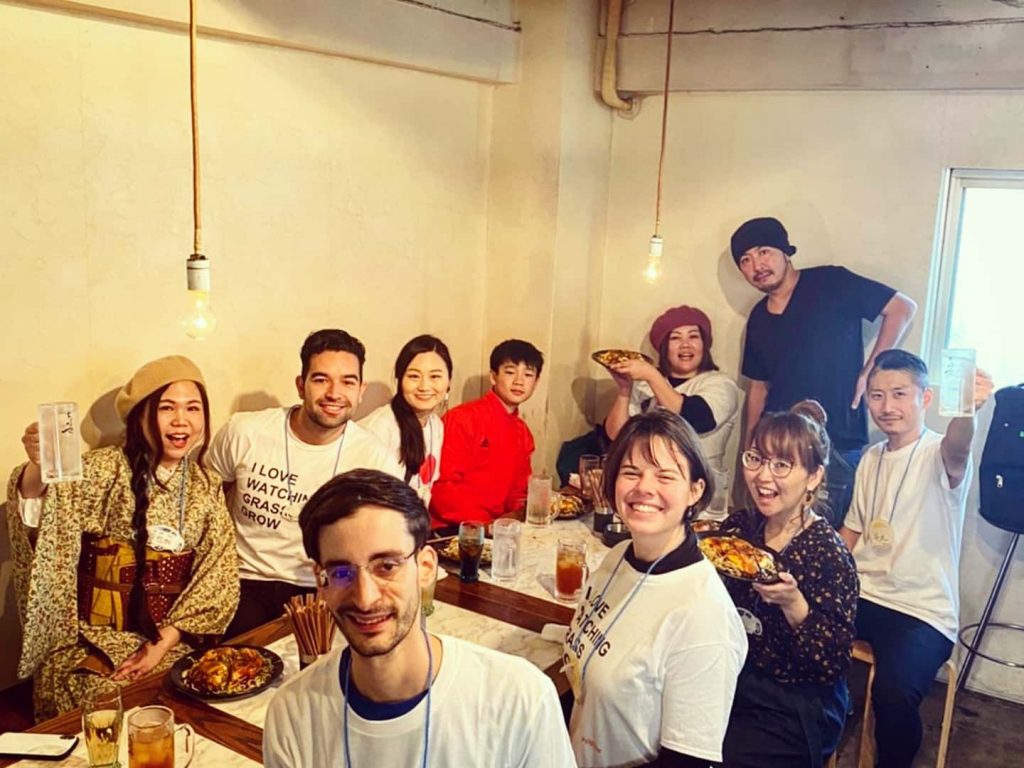By Sage Panter from EIGLOBE
It doesn’t matter who you are or where you are, living in a foreign country is full of challenges. I am American and I live in Japan. I am going to talk about the challenges I have personally faced since I moved to here.

The 1st challenge is...
being a foreigner.
America is referred to as a “melting pot” country. A “melting pot” is a pot that has many different ingredients inside that melt together. When a country is called a “melting pot” it means a country with many different types of people inside that live together. So, growing up in America, I was used to seeing many different types of people who all lived there with me. People have different colored skin, speak different languages, worship many different religions, eat different kinds of food, but they are all American. Japan is not a “melting pot” country. Almost everyone has the same colored skin, speaks the same language, has very similar views on religion, and eats the same kinds of food. I am white and I speak Japanese with an accent and mistakes, so I am inescapably foreign in Japan. When I go out, someone is always looking at me, when I hang out with Japanese friends, I am always “the one foreigner” in the group. I am always in the spotlight, in both positive and negative ways, and this can be exhausting. The homogenous nature of Japan takes some getting used to.
最初の大きなハードルは、「外国人であること」です。
アメリカは「人種のるつぼ」と呼ばれる国です。「るつぼ」とは、いろいろな材料を一緒に入れて溶かす鍋のことです。つまり、「人種のるつぼ」とは、さまざまな背景や文化を持つ人たちが一緒に暮らしている社会のことを意味します。アメリカで育った私は、いろんな肌の色の人、違う言語を話す人、さまざまな宗教を信じる人、いろいろな料理を食べる人たちが、当たり前のように一緒に暮らしているのを見てきました。そして、みんな「アメリカ人」なのです。
一方、日本は「人種のるつぼ」とは言えません。ほとんどの人が同じ肌の色をしていて、同じ言語を話し、宗教に対して似たような考え方を持ち、似たような食事をしています。私は白人で、日本語を話すときにアクセントや間違いがあります。そのため、どうしても「外国人」として見られてしまいます。
外に出れば、誰かに見られていると感じることが多いです。日本人の友だちと一緒にいても、「グループの中でひとりだけの外国人」になります。良くも悪くも、いつも注目される存在で、それがとても疲れることもあります。日本の「均質な文化」に慣れるには、少し時間がかかるものだと感じています。
Another (2nd) challenge is...
the language barrier.

It is difficult to learn a foreign language. It takes years of practice and hard work. I studied Japanese for three years at my University in America. I learned Hiragana, Katakana, some Kanji, and practiced a lot with grammar and vocabulary. However, speaking and understanding a foreign language outside the safety of a classroom is a different experience. People often say things I don’t expect and say it in a way I have never heard from a textbook or from my teachers. I have also had to learn things my Japanese teachers probably never thought to teach me. For example, in school we practiced introductions and how to give directions, and how to order food in a restaurant, but, since I’ve moved to Japan, I’ve had to learn how to speak in banks, city offices, doctor’s offices, and rental offices. Visits to places like this were just annoying when I lived in America, here they are almost scary. They are scary because I don’t know if I will understand everything or be able to explain myself properly. I took how easy these errands were for granted when I lived in America.
二つ目の大きなハードルは、「言葉の壁」です。
外国語を学ぶことは、とても難しいことです。それには何年もの努力と練習が必要です。私はアメリカの大学で3年間日本語を勉強しました。ひらがな、カタカナ、少しの漢字を覚え、文法や語彙もたくさん練習しました。でも、教室という安全な場所を出て、日本語を実際に使うとなると、まったく違う世界が待っていました。
人は、予想しないことを言ったり、教科書や先生からは一度も聞いたことのないような言い方をしたりします。日本で暮らす中で、私の日本語の先生たちが教えることを思いつかなかったような表現も、自分で学ばなければならなくなりました。
たとえば、学校では自己紹介の仕方や道案内の方法、レストランでの注文の仕方などを練習しました。でも、日本に引っ越してからは、銀行や市役所、病院、不動産屋などでの会話が必要になりました。アメリカにいたときにはただ「めんどうだな」と思っていたこうした用事が、日本では「怖いもの」に変わったのです。
なぜ怖いのかというと、自分がちゃんと理解できるのか、そして自分の考えをうまく伝えられるのか、自信がないからです。アメリカにいた頃は、こうした用事がどれだけ楽だったか、あまり考えたこともありませんでした。でも今になって、そのありがたさを実感しています。
A 3rd challenge is...
a cash-based economy.

When I was a child in America, America was cash based, but since then, cards have become increasingly more popular. Now, it is uncommon to carry large amounts of cash and it is very rare for business to be cash only in America. As a result, during my adult life in America, I got used to handling cards almost exclusively. My wallets were very thin because I never carried coins, only cards. In Japan, I have had to get used to handling cash almost exclusively. This has come with unexpected challenges. For example, if I become lazy and stop using change when I purchase things, my wallet will rapidly fill with coins and become really heavy. Another example is online purchases. In both America and Japan, websites like Netflix and Amazon are popular. In America, I signed up for both of these services with my debit cards without thinking much about it. In Japan, I don’t have a credit card and debit cards don’t automatically come with a bank account like they do in America, so I’ve had to find other ways to pay for Netflix and Amazon.
三つ目の大きなハードルは、「現金中心の社会」です。
私の子ども頃は、アメリカも現金が主流でした。しかしその後、カードの利用がどんどん広まり、今では多くの人がほとんど現金を持ち歩かなくなっています。現金しか使えないお店は、アメリカではとても珍しくなりました。
そのため、アメリカで大人になってからは、私はカードばかり使う生活に慣れていました。財布もとても薄くて、小銭はほとんど持っていませんでした。カードだけあれば十分だったからです。
ところが日本に来てからは、逆に現金をほとんど毎日使うようになりました。これは思っていた以上に大変でした。例えば、つい小銭を使わずに買い物をしてしまうと、すぐに財布の中が小銭でいっぱいになってしまいます。財布は重くなり、かさばって持ち歩くのが面倒になります。
もうひとつの例は、インターネットでの買い物です。アメリカでも日本でも、NetflixやAmazonのようなサービスは人気です。アメリカにいた時は、深く考えることもなくデビットカードでこれらのサービスに登録していました。でも日本では、クレジットカードを持っておらず、デビットカードもアメリカのように銀行口座と自動でついてくるわけではありません。そのため、NetflixやAmazonの支払い方法を、自分で模索しなければなりませんでした。
キャッシュレスに慣れていた私にとって、日本の現金社会は、思わぬところで不便さを感じることになりました。
A 4th challenge is...
Japan’s use of paper for everything.
In America, a lot of interactions, both simple and complex, have become digital. From surveys to ballots to job contracts, almost everything is digital or has a digital option in America.
In Japan, it seems to be the opposite. Just about everything requires a physical copy and a physical signature or stamp. In America, for many situations, I didn’t have to go any further than my home computer to accomplish something.

In Japan I have to go to two, sometimes three, different places to get one thing done because I need the physical paperwork and signatures from various people in order for it to be approved and finished.
四つ目のハードルは、「日本社会における紙文化」です。
アメリカでは、簡単な手続きから複雑な手続きまで、今では多くのことがデジタルで済むようになっています。アンケート、投票、仕事の契約書など、ほとんどのものがオンラインで対応できるか、少なくともデジタルの選択肢が用意されています。
しかし、日本ではその逆のように感じます。ほぼすべての手続きにおいて、紙の書類と手書きのサイン、あるいはハンコが必要です。アメリカでは、自宅のパソコンひとつで簡単に済ませられることがたくさんありました。でも日本では、ひとつの用事を終わらせるのに、2ヶ所、時には3ヶ所もまわって、必要な書類やサインをもらわなければならないことがあります。
すべてが紙で処理されるこの文化に慣れるのは、なかなか大変です。物事を完了させるために、実際に足を運び、紙に書いて、印鑑を押して…という一連の手続きが必要で、時間も労力もかかります。効率的なはずの現代社会で、これほどまでに「紙」ベースでやりとりされていることに、最初はとても驚きました。
My 5th challenge is...
Food.

I actually love Japanese food. Many of the stereotypical foods Americans are supposed to not like are not a problem for me. For example, I love fish, even raw fish. So, I don’t have a problem with Japanese food. My challenge is the food I can’t find. For example, America loves cereal and I am an American who loves cereal. Of course, Japan has cereal, but there are only four or five kinds here! In America, an entire aisle of the supermarket is devoted to cereal. There are dozens of different kinds, and its wonderful. I miss that. I also miss cheese. Japan has cheese, and some if it is quite tasty but I haven’t been able to find enough good cheese and it’s expensive. In America, I used to buy a huge block of quality, sharp cheddar cheese for under the equivalent of 300 yen. I also miss bread. I love Japanese bakeries, there are so many delicious and fun kinds of breads and pastries, but I miss dense, nutty bread. Dense, nutty bread is very hard to come by in Japan. The food I miss the most is probably American breakfasts. I love American breakfast diners. They are very affordable and it was a nice option on a weekend morning. I used to go to a breakfast diner down the road from my house in America, they had unlimited refills of coffee and huge stacks of pancakes with butter and syrup with a side of crispy bacon.
五つ目のハードルは、「食べ物」です。
実は、私は日本食が大好きです。アメリカ人が苦手だと言われがちな食べ物も、私にとってはまったく問題ありません。たとえば、私は魚が好きですし、生魚も大歓迎です。ですから、「日本食が合わない」という悩みは私にはありません。
私にとっての本当の課題は、「日本では見つからない食べ物」です。たとえば、アメリカではシリアルがとても人気です。そして私は、そのシリアルが大好きなアメリカ人の一人です。もちろん、日本にもシリアルはありますが、種類は4〜5種類しか見かけません。アメリカでは、スーパーの1列まるごとがシリアルで埋めつくされていて、何十種類ものシリアルが並んでいます。あの光景が恋しいです。
チーズも恋しい食べ物のひとつです。日本にもチーズはありますし、中にはとてもおいしいものもあります。でも、アメリカに比べると種類が少なく、値段も高いです。アメリカでは、質の良いシャープチェダーチーズの大きな塊が、たった300円くらいで買えました。
それからパンも恋しいです。日本のパン屋さんは本当にすばらしくて、おいしくて楽しい種類のパンがたくさんあります。でも、私が恋しいのは、どっしりとした食感でナッツの入ったパンです。日本ではこういうパンを見つけるのはなかなか難しいです。
そして一番恋しいのは、やはりアメリカの朝食です。私はアメリカの朝食レストラン、いわゆる「ダイナー」が大好きです。価格も手ごろで、週末の朝に行くのにぴったりな場所でした。アメリカの自宅近くには、通い慣れた朝食ダイナーがありました。そこではコーヒーがおかわり自由で、バターとシロップがたっぷりかかった大きなパンケーキの山に、カリカリのベーコンが添えられていました。
日本の食文化を楽しんでいる一方で、やっぱり「自分の国の味」が恋しくなることもあるのです。

I have lived in Japan for over two years of my life now. Not that long, but long enough to deal with these challenges. I have discovered, when you just visit a place, it is possible to only see the beauty of it. When you live in a place, you see both the beauty and the ugly of it. No place is perfect, there are many things I know are imperfect about America. As an American, I know its imperfections very well. Now that I live in Japan, I am experiencing some of its imperfections as well, but I also still see it as a beautiful and exciting place to live.
It is my home right now and I don’t want to be anywhere else.
私はこれまでに、日本で通算2年以上暮らしています。決して長い時間ではありませんが、それでも、ここで挙げてきたようなさまざまな課題と向き合うには十分な時間でした。
ひとつ気づいたのは、「旅行」と「生活」はまったく別のものだということです。旅行で訪れるだけなら、その場所の美しい面だけを見て過ごすことができます。しかし、実際にそこに住むようになると、美しさだけでなく、不便さや問題点、つまり「その土地の現実」も見えてくるのです。
どんな国にも完璧な場所など存在しません。アメリカにもたくさんの欠点がありますし、それはアメリカ人である私自身がよく知っています。そして今、日本に住んでいることで、日本のすばらしさと同時に、その中にある不便さや課題も感じるようになりました。
それでも私は、日本をとても魅力的で、美しい場所だと思っています。
今の私にとって、日本は「今の自分の居場所」であり、「帰るべき場所」です。どこか別の場所へ行きたいとは、全く思いません。

この記事は、どのくらい今の時点で理解ができるかを試してもらえ
コツは、諦めずに読み進めること!英語習得のために大事なインプ


